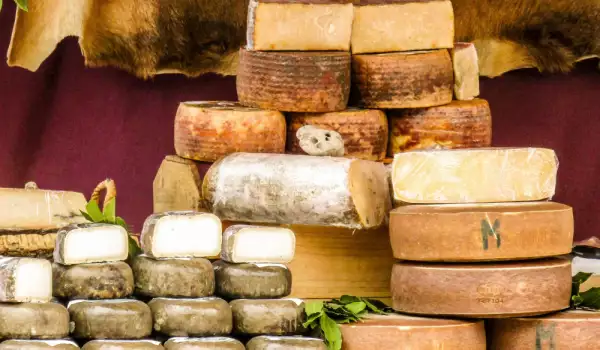Experts say that cheese is one of the oldest discoveries of man, more ancient than bread and wine. Most likely, it is one of the reasons for the domestication of sheep in the Neolithic period. Its history is inextricably linked with the history of man.
History of cheese
Shepherds in ancient times, noticed that fermented and later dried milk was easier to transport. This marked the beginning of cheese production.
The first data on such production date back to about 8 thousand years BC and this process appeared as a natural result of the lumping up of milk.
The different nutritional and taste qualities of people from different regions led to the emergence of an incredible variety of types and varieties of cheese and this continued throughout human history, in the civilizations of the Middle East, Egypt, the culture of Mesopotamia and in Europe. Even in ancient Greece and Rome, cheese was mentioned as a staple food.
Where and how cheese entered Europe is difficult to say with certainty, it is all in the realm of legends, but according to some researchers, cheese production in Europe was first brought from Asia and in particular from China. In fact, the important thing is what are the oldest cheeses in Europe.
Stories and legends are the basis of European cheese throughout the centuries. If it is not possible to determine exactly which cheese should be given primacy, then the contenders and their reasons can be indicated.
Cheese in Ancient Greece and Rome

Perhaps the oldest are the cheeses produced in ancient Greece and Rome. Homer even speaks of goat cheese, which was grated. From other evidence we learn that in ancient times the Greeks often served cheese with honey.
The Romans loved raw cheeses or cheeses baked with olive oil. A very important aspect was the salt used to dry the cheese. Goat cheese was highly regarded and legionaries often carried this food with them on their expeditions.
Swiss Sbrinz cheese
The Swiss claim that their Sbrinz cheese is the oldest European cheese that has been documented. It is believed that Pliny the Elder was referring to it between 23 and 79 BC when he described the cheese of the Helvetians.
The production of this cheese was documented, however, in 1530, when it was mentioned in the archives of Bern. It is believed that this very hard cheese was originally produced in Lombardy, from where it was transferred to the area of the town of Brienz, which is also where the product gets its name from.
The cheese of the Benedictine monks

Cheese flourished during the Crusades, when the Crusaders, returning from the holy places, brought with them recipes for making cheese, which they shared with the monks. The monasteries became centers for the production of cheese and its sale outside, among the population. The monks gave their products different names that have survived to this day - Tête de Moine cheese, Herve and many others.
Gradually, the cheese began to be made in large forms, in which it is known to this day - Emmental, Gruyere, Beaufort and others.
In the 12th century in Italy, the production of cheese by monks in the monasteries developed rapidly, and from then on the now famous Mozzarella, Parmigiano Reggiano and others date back.
Find out which are the most expensive cheeses and the smelliest cheeses in the world.




















Comments